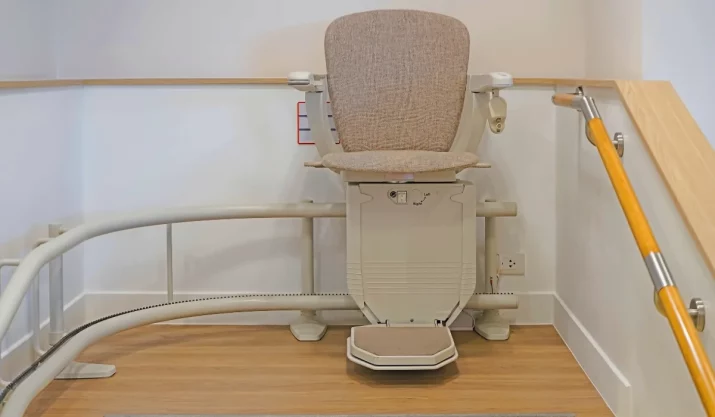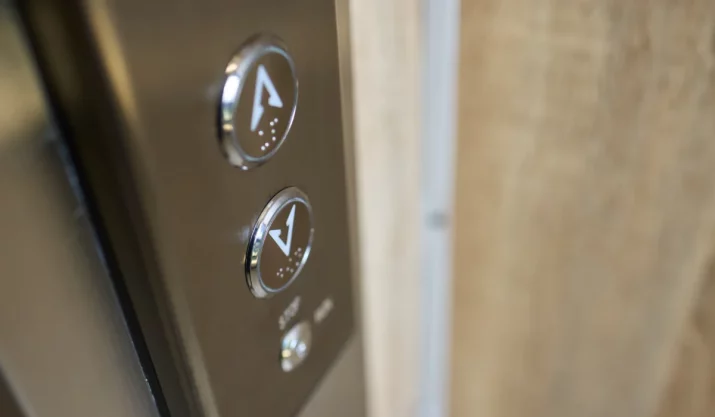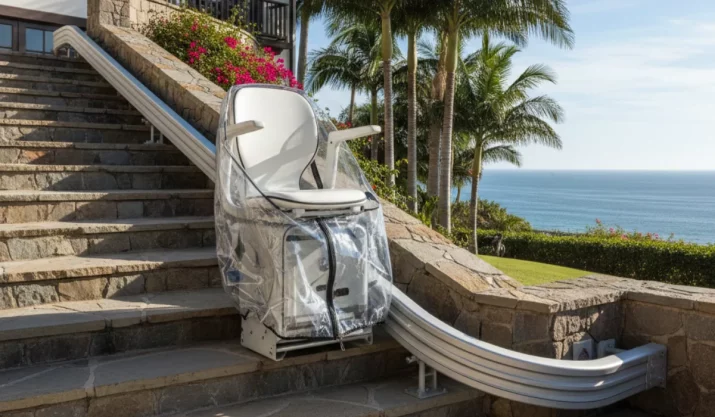Chair Lift or Standing Stair Lift: Choosing the Best Option for Your Home

Table of Contents
If getting up and down stairs in your California home has become a challenge, you’re not alone. For people with limited mobility, whether due to aging, injury, or a medical condition, navigating stairs can be stressful and even dangerous.
That’s where stair lifts come in.
But as you start exploring your options, you’ll quickly notice there are two main types: the traditional chair lift and the standing stair lift.
So, how do you choose between the two?
Below, we’ll help you sort through the options by offering tips that are especially relevant for California homeowners.
Key Takeaways
- A chair lift is best for sitting support, while a standing stair lift fits better in narrow spaces.
- The shape of your stairs and how you move each day should guide the type of lift you choose.
- A standing or seated stair lift may not work for wheelchair users who need a different mobility solution.
- California Mobility can help families find safe stair lifts with expert advice, useful features, and local California support.
How to Choose Between a Chair Lift and a Standing Stair Lift?
Before you pick your chosen type of stair lift, there are a few important things to think through. Your home, your body, and your day-to-day routine all play a role in what will work best.
Here’s how to choose the right stair lift for your situation:
Step 1: Assess Your Staircase Layout
Start with the obvious. Look at the shape and size of your staircase.
Many homes in California, especially older craftsman or multi-level ranch-style designs, feature narrow staircases or curved staircases.
If your stairs are particularly tight or steep, a standing stair lift may be a better fit because of its slim profile.
However, if your staircase includes landings or curves, you’ll want to consider a curved stair lift, which can be customized to your stair design.
Chair lifts are more versatile in this regard, offering both straight stair lifts and curved rail options that can be tailored to nearly any layout.
Step 2: Consider Your Physical Needs
Think about how you or your loved one typically moves.
Do you have issues with balance, fatigue, or sitting down and standing up?
If so, a seated stair lift offers the most support. Models with swivel seats, armrests, and a secure seat belt provide maximum stability and safety.
But if bending your knees is the problem, but you can still stand securely, a standing stair lift allows you to remain upright or perch slightly.
This is ideal for individuals with joint pain or stiffness, such as arthritis. Make sure any lift you consider has safety features like grab rails and a secure footrest.
Step 3: Think About Who Will Use It
Mobility aids often serve more than one person.
If you live with family members or have family caregivers coming in and out, you’ll need a lift that’s easy for everyone to operate.
Most modern stair lifts include a remote control for call/send features, so users don’t get stranded at the bottom of the stairs.
If the lift is for a wheelchair user, neither a chair lift nor a standing stair lift may be suitable. In those cases, a wheelchair lift or vertical platform lift is a better long-term solution.
California Mobility also offers home elevators and home lift systems for multi-level homes that require full wheelchair access.
Step 4: Review the Safety Features
California has strict residential safety codes, so make sure your stair lift meets or exceeds local standards.
Regardless of the model you choose, look for key safety features like:
- Emergency stop buttons
- Seat belts or safety bars
- Obstruction sensors
- Locking swivel seats (for seated models)
- Secure footrests or standing platforms
Additionally, be mindful of weight capacity, especially in older homes where multiple family members might need access.
California Mobility offers heavy-duty stair lift models that can accommodate higher weight limits safely.
Step 5: Weigh the Costs (Now and Later)
A quality stair lift isn’t just a purchase. It’s an investment in comfort and independence. That said, stair lift cost depends on your specific staircase, model choice, and optional features.
A straight stair lift will be less expensive than a curved stair lift, and standing stair lifts may have fewer customization options, potentially reducing cost.
It’s also important to consider the warranty, installation, and ongoing maintenance.
Step 6: Think Long-Term About Your Mobility
Mobility needs change, and what works today might not be enough next year. If you’re choosing a lift for a loved one, make sure to think a few years ahead.
Will their ability to stand or sit change over time?
Do they have a progressive condition like Parkinson’s or multiple sclerosis?
Chair lifts tend to be more adaptable in these scenarios. Some models even allow for upgrades or replacement parts if the user’s condition evolves.
A Stannah or Acorn brand stair lift can grow with your specific needs, and many users appreciate their track record and reliability.
Get Personalized Help From California’s Stair Lift Experts
Choosing between a chair lift and a standing stair lift doesn’t have to be overwhelming. At California Mobility, we help families all over the state, from San Diego to Sacramento, find safe, comfortable mobility solutions that fit their lifestyle, home layout, and budget.
Talk to a local mobility expert and get a free stairlift quote customized to your home. Our team is ready to walk you through every option, step by step.






